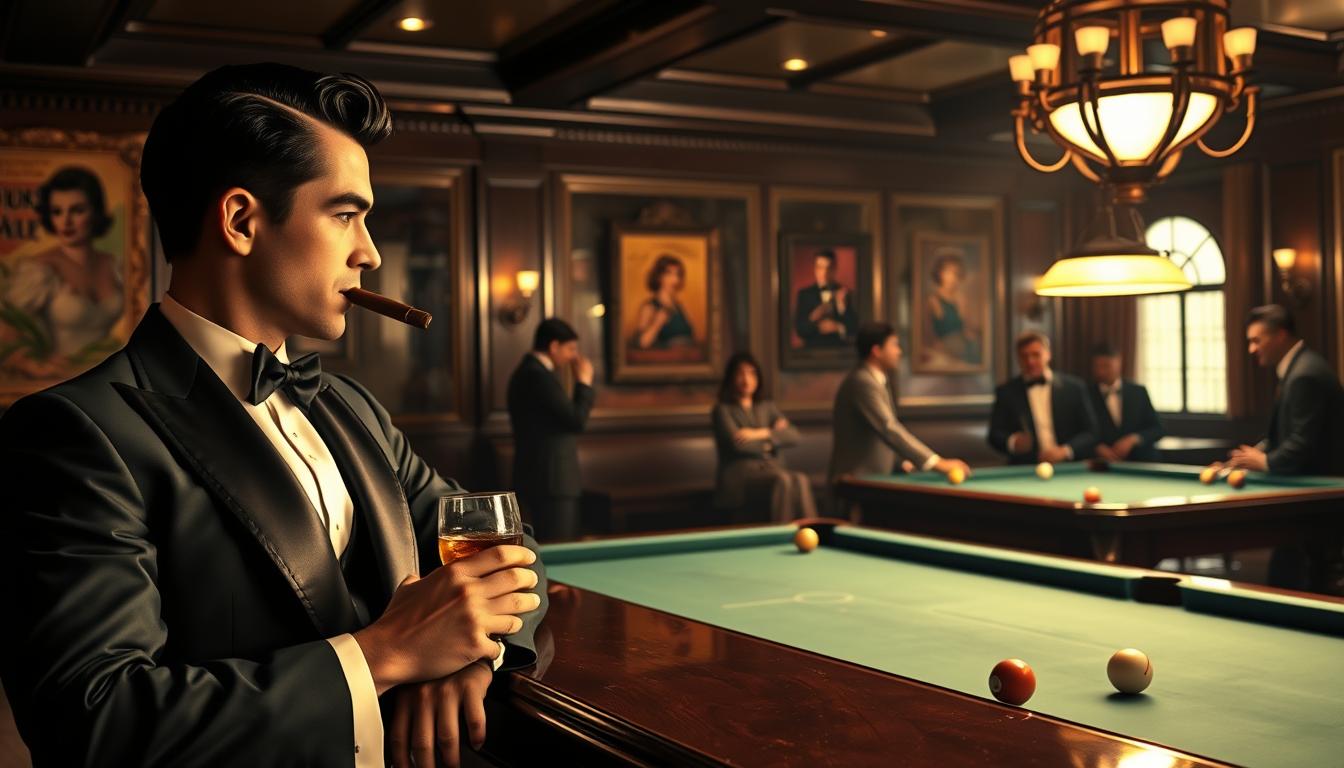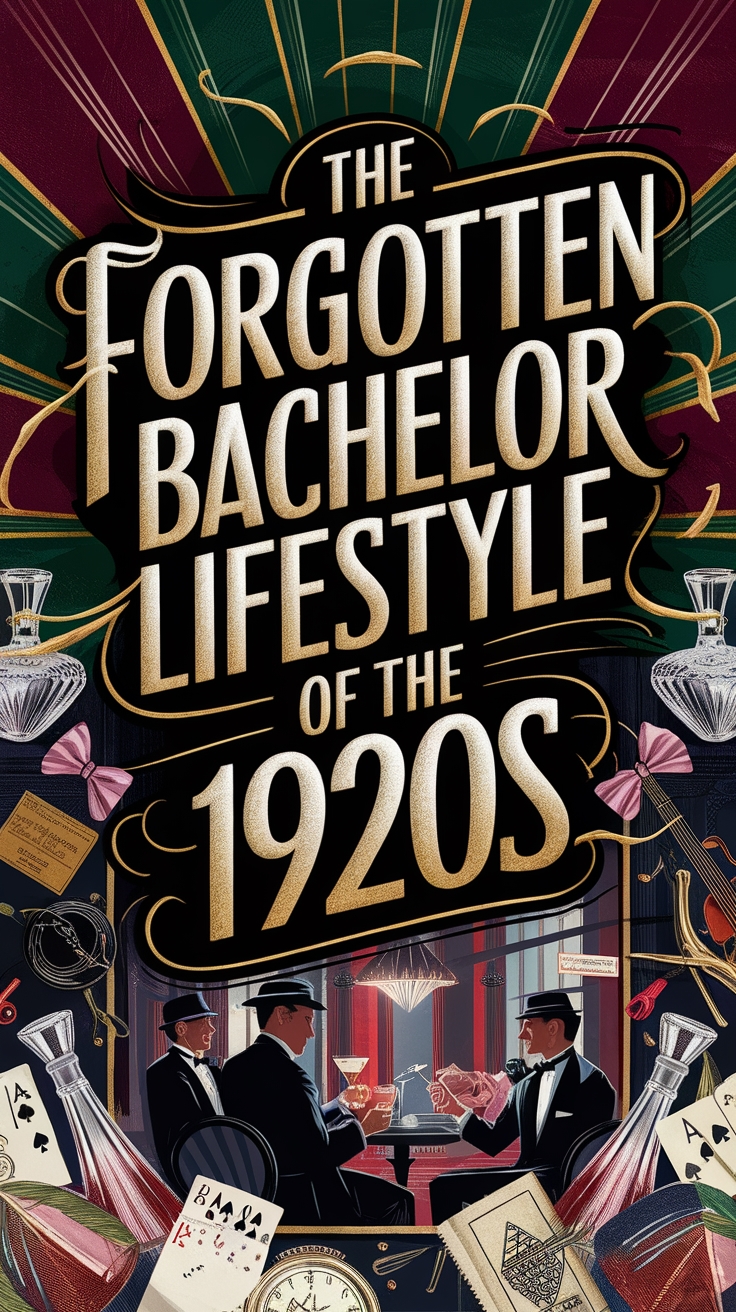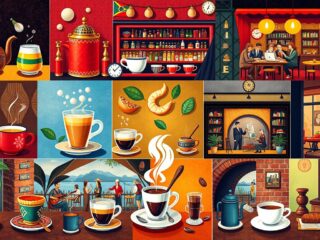Imagine New York City in 1925. The streets were alive with energy, jazz music filled the air from secret clubs, and single men were living a new kind of life. This era, known as the roaring twenties, brought a wave of freedom and change. It changed how single men lived, worked, and had fun.
The bachelor lifestyle of the 1920s was shaped by good times, new tech, and big changes in society. Cities became playgrounds for single men. They found freedom and chances they never had before.
In this exciting time, young men took control of their lives. They broke free from old rules, enjoyed new entertainment, and made a unique identity. This identity would be remembered in American history.
Key Takeaways
- The roaring twenties marked a radical shift in bachelor culture
- Economic boom created unprecedented opportunities for single men
- Urban environments became centers of social transformation
- Traditional social norms were dramatically challenged
- Technology and cultural changes fueled a new lifestyle
The Rise of the Jazz Age and Its Impact on Bachelorhood
The 1920s were a time of big change, with the jazz age changing how people socialized and saw bachelorhood. Young men found new freedoms thanks to an economic boom. Jazz music was at the heart of this change, bringing rebellion and self-expression.
Black musicians were key in this shift. They used their music to get noticed and find new opportunities. The bebop movement, with its complex rhythms, helped men express themselves and find their identities.
Dance halls and nightclubs were where bachelors hung out. These places were more than just fun spots. They were where men could meet people, find love, and discover who they were. The good economy of the time gave young men the chance to explore and grow.
The jazz age changed how men interacted with each other. By 1930, 41.7% of men were single, showing a trend of waiting longer to get married. Music, like jazz, let bachelors express themselves and challenge old ways, helping them find their own paths.
Speakeasies: The Secret Havens of Freedom and Fun
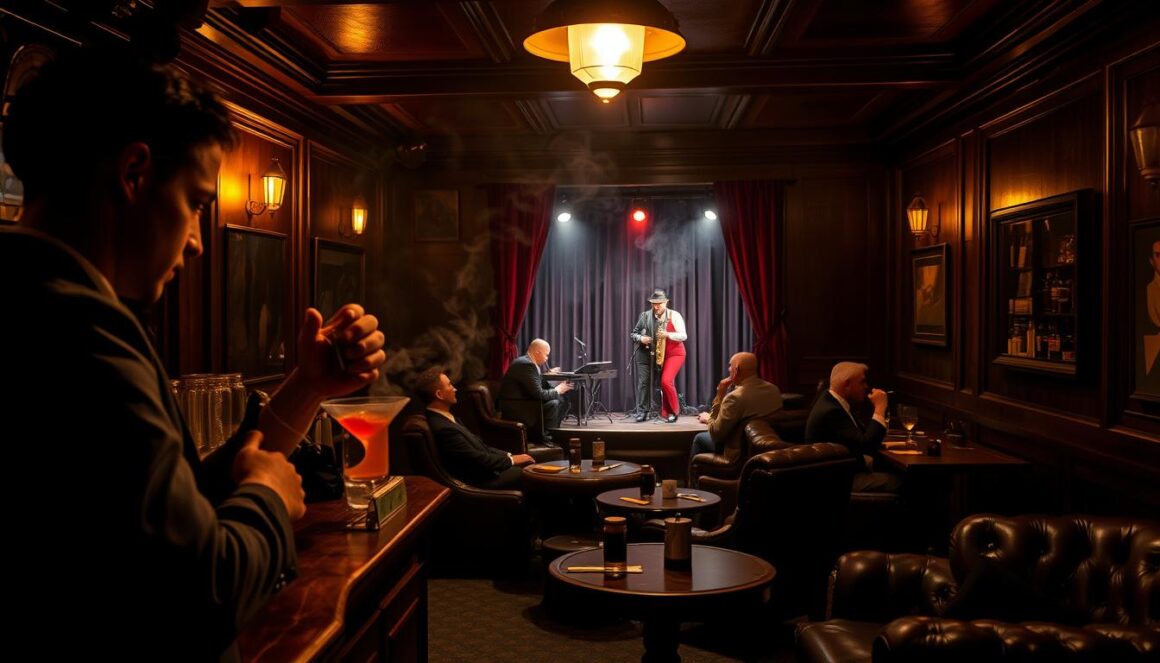
During the prohibition era, speakeasies became secret places of excitement and rebellion. They were more than just places to drink. They were cultural landmarks that challenged the strict social norms of the time.
Speakeasies were hidden behind unmarked doors and needed secret passwords to enter. They offered a thrilling escape from daily life. Young men found live jazz music, fancy cocktails, and freedom that was hard to find elsewhere. The danger of getting caught made each visit exciting.
Cocktail culture thrived in these secret spots. Bartenders made creative drinks, turning simple alcohol into art. Young men learned to make these drinks, making drinking a sophisticated experience.
The prohibition era created a unique social scene. Speakeasies were places where young men could connect, network, and challenge old rules. They were melting pots of creativity, rebellion, and self-expression. They defined a generation of young men who refused to follow traditional paths.
Flapper Culture and Its Influence on the Bachelor Lifestyle
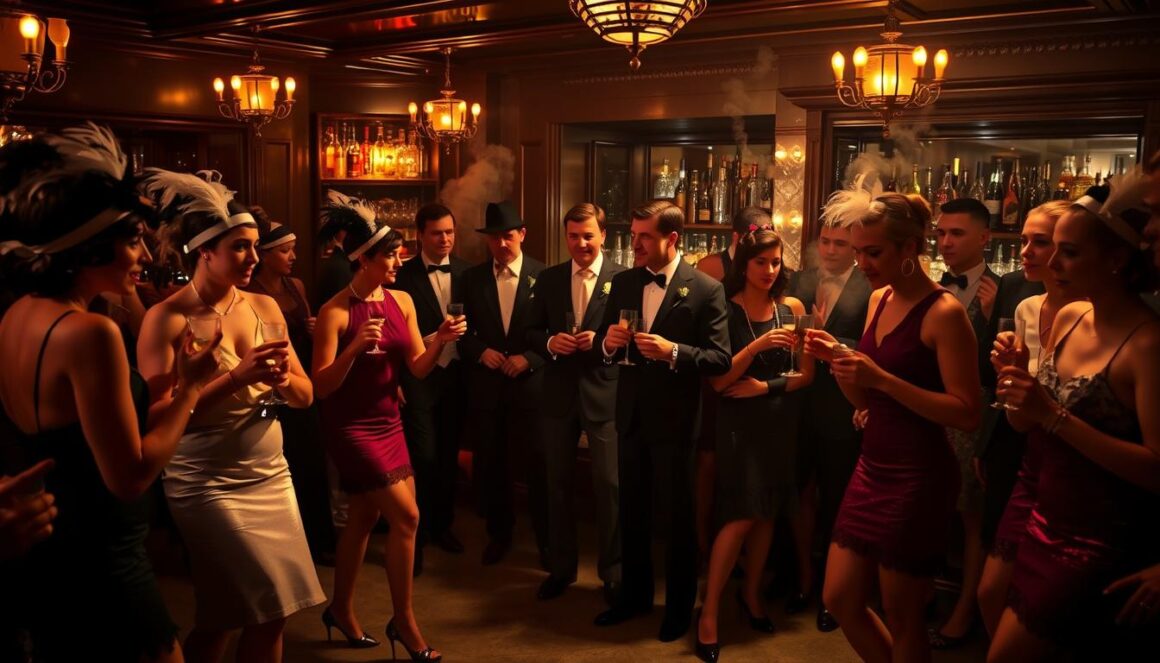
The 1920s were a time of big change in how people interacted. Flappers, young women, led the way in changing the bachelor lifestyle. They challenged old rules, creating new ways for men and women to connect.
The Gatsby lifestyle was all about trying new things. Single men had to get used to women who were independent and outspoken. Flappers were different from their mothers and grandmothers. They smoked, danced in a bold way, and wanted to be treated as equals.
Urban bachelors had to adjust to these new times. Social events became more fun and less formal. Places like jazz clubs and speakeasies were where the old rules didn’t apply. Here, people could make new connections in exciting ways.
Fashion was also a big part of this change. Men’s clothes became more relaxed and cool, just like the flappers’ style. They wore sharp suits, fedoras, and casual sportswear. This showed the freedom and confidence of the bachelor lifestyle.
The rise of flappers changed how people interacted. It gave both men and women the chance to have real, open relationships. This change would be remembered in American history.
Technological Advancements and the Modern Bachelor
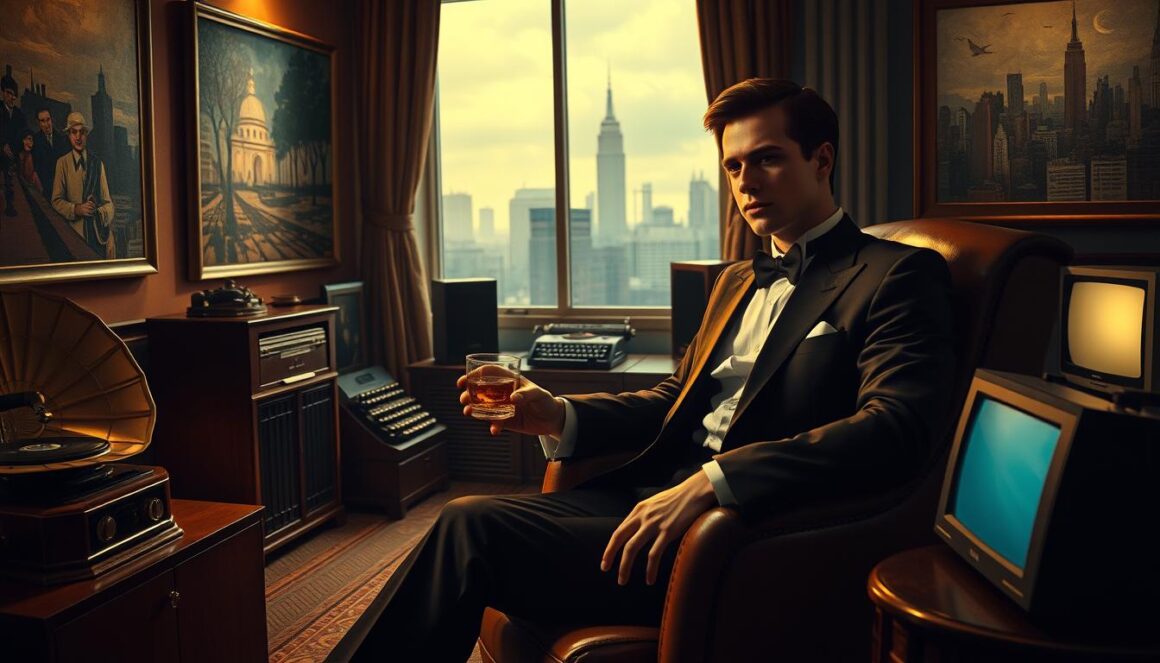
The Roaring Twenties saw a big change in the bachelor lifestyle thanks to new technology. Cars were a big part of this change. By 1929, car sales had risen from 1.6 million in 1919 to 4.5 million.
Car ownership gave bachelors a lot of freedom. They could go places they never could before. This opened up new chances for dating and making friends.
Things like telephones and radios also changed how bachelors socialized. These tools let men stay in touch easily. They could plan parties and share news quickly.
These technologies gave bachelors new ways to express themselves and connect with others. Cars and communication devices changed the game for men. They became symbols of freedom and connection.
Rebellion Against Societal Norms and the Quest for Identity
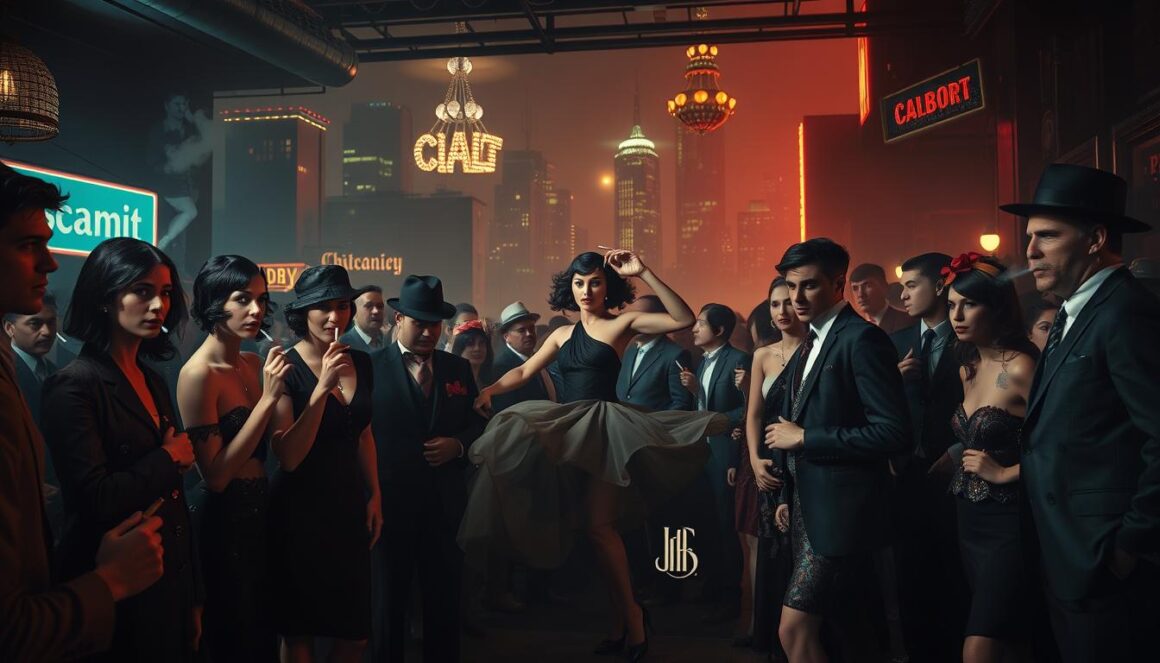
The Jazz Age was a time of big change, where young men broke free from old rules. They rejected strict social rules that had been around for a long time. World War I had changed what it meant to be a man, making them question their place in society.
Young men in the 1920s started to doubt old ideas about marriage, jobs, and happiness. They wanted to live life on their own terms, not follow the usual paths. They explored new ways of living, going to jazz clubs, trying art, and pushing against what was expected of them.
Writers and artists of the time captured this big change. They showed how society was shifting in their work. This search for who they were was not just about personal choices. It was a sign of a bigger cultural shift in America.
By the late 1920s, about 70% of city bachelors felt this way, making it a big movement. Their refusal to follow old rules changed how Americans saw freedom and being themselves.
Fashion and the Personal Style of the 1920s Bachelor
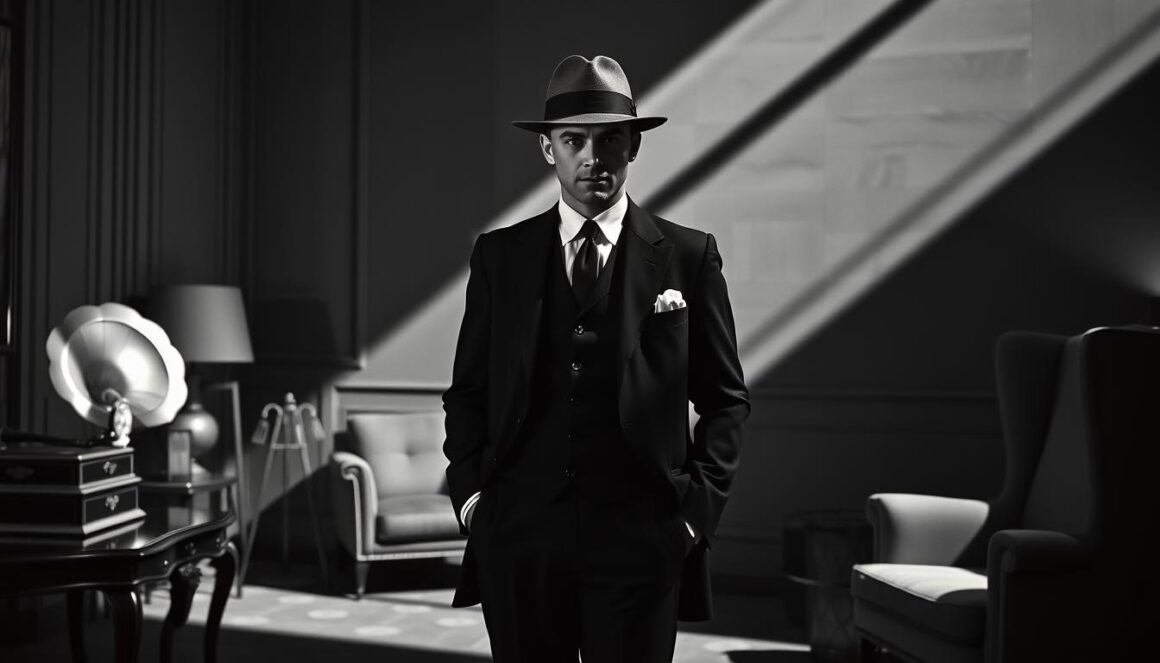
The 1920s brought a big change to men’s fashion, inspired by the gatsby lifestyle. Art deco made clothes look clean and modern. Suits became a sign of manly elegance, with slim cuts and neat shapes.
Young men wore tailored suits in wool and linen. They liked shorter jackets and higher waistlines, moving away from old styles. The classic three-piece suit was the top choice for looking sharp.
Accessories were key to the gatsby look. Sharp hats, silk squares, and shiny oxfords were must-haves. Men tried out bold and subtle patterns, showing off the era’s artistic side.
Grooming got a lot better in the 1920s. Men had slicked-back hair, neat mustaches, and clean faces. The art deco focus on detail and elegance showed in how men looked.
The 1920s bachelor saw fashion as a way to express himself. Every outfit told a story of freedom, class, and being true to oneself.
The Lasting Legacy of the 1920s Bachelor Lifestyle
The 1920s bachelor lifestyle made a big impact on American culture. Men during the Roaring Twenties broke free from old rules. They created a new idea of masculinity that inspired many.
Icons of the time showed bold ways to express themselves. Writers like F. Scott Fitzgerald and Ernest Hemingway were adventurous and independent. Their stories showed a time of change, where being yourself was celebrated.
The bachelors of the 1920s brought new ideas about style, social life, and being free. They showed that living life on your own terms was important. Their ideas about being a man, expressing yourself, and moving up in society are ideas we see today.
Even now, the Roaring Twenties bachelor is seen as a symbol of freedom and style. Movies, books, and fashion keep the era alive. It’s a time of individuality, curiosity, and standing up against the norm.
The bachelors of the 1920s helped shape our views on freedom and self-expression. Their impact is huge in American culture. They showed us that breaking free from old ways is key to a new vision of manhood.
Wrapping Up: The forgotten bachelor lifestyle of the 1920s
The Jazz Age was a time of big change for bachelors in America. From 1918 to 1929, single men found new ways to live freely. They broke free from old rules, showing off their unique selves.
Big cities became the heart of this new bachelor world. More men stayed single, and cars became more common. This led to a lively scene of nightlife, secret bars, and jazz music.
The economy was booming, with the stock market soaring. This wasn’t just about freedom—it was a cultural awakening. Writers like F. Scott Fitzgerald and jazz music changed America’s social scene forever.
Looking back, the Jazz Age shows us the power of creativity and change. The bachelors of the 1920s didn’t just survive—they left a lasting mark. Their stories inspire us to be independent and true to ourselves.
FAQ
What made the bachelor lifestyle of the 1920s so unique?
The 1920s were special for bachelors because of good times, social changes, and new freedoms. The Jazz Age gave young men a chance to show who they were, move up in society, and have fun. It was a time when old rules didn’t apply anymore.
How did Prohibition impact bachelor social life?
Prohibition actually made life more exciting for bachelors. Speakeasies became places for them to hang out, make friends, and have fun. These secret spots were full of energy and made the forbidden fun.
What role did technology play in the 1920s bachelor lifestyle?
Cars and phones changed bachelor life a lot. Cars let them go places and meet people, while phones helped them stay in touch. These tools made their social lives more vibrant and connected.
How did flapper culture influence bachelor relationships?
Flappers changed how bachelors dated and socialized. They wanted more fun and equality in relationships. This made bachelors adapt to new ways of courting and socializing.
What defined fashion for bachelors in the 1920s?
1920s fashion for bachelors was all about clean lines and modern looks. They wore suits and had a relaxed style. Accessories and how they looked became important ways to express themselves.
Why was the 1920s bachelor lifestyle considered rebellious?
The Lost Generation, after World War I, didn’t want to follow old rules. They wanted to find their own way in life. This made their bachelor lifestyle seem bold and new.
How did jazz music impact bachelor culture?
Jazz music was key to bachelor culture. It stood for freedom and fun. Dance halls and clubs were where bachelors could be themselves and enjoy the music of the Roaring Twenties.
What made the economic boom of the 1920s significant for bachelors?
The good economy gave bachelors money to live it up. They could travel, have fun, and enjoy life in ways they never could before.
How did the bachelor lifestyle of the 1920s differ from previous eras?
The 1920s were different because bachelors had more freedom and chances to be themselves. It was a big change from the strict Victorian times to a more open and individualistic era.

